
The abandoned Havelis of Sardarshahr offer a glimpse into the grandeur and riches once typical of the princely state of Rajasthan. The little known historical city of Sardarshahr is located just 140km north east of Bikaner but is well off the tourist trail. Established in the 19th century by Indian standards this is a relatively new city, yet its days of glory seem to have already passed. A wander through the laneways of the old city affords a glimpse of the opulence that once prevailed in this merchant city.
The grandeur of the havelis remains evident today, though sadly many are falling into ruins. All locked up with pigeons the only residents, the owners have long ago departed seeking better opportunities interstate or abroad.
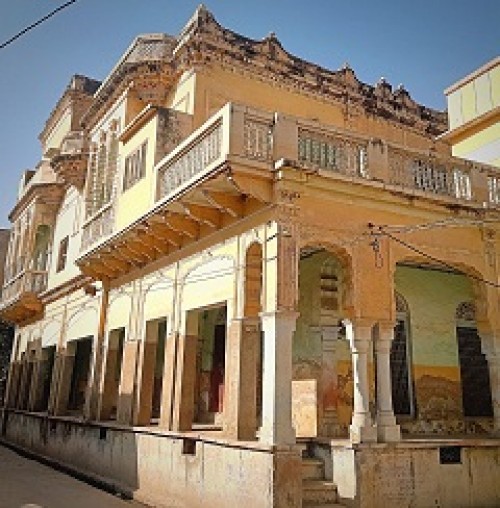
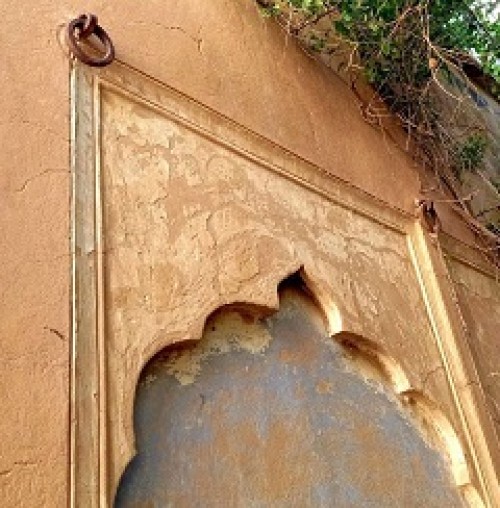
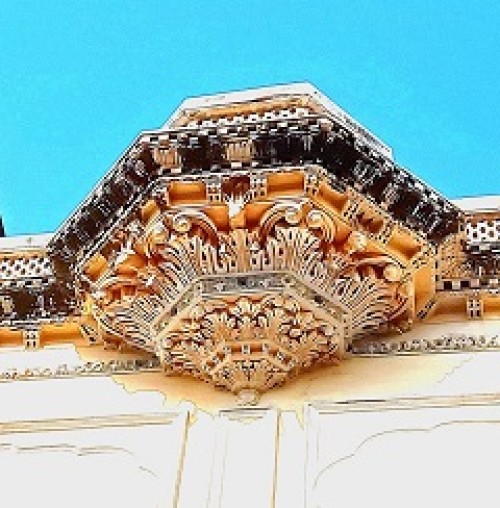
Each of the Havelis of Sardarshahr are adorned in their own unique style, with Thappi, Lohi and Araish plasters, intricate frescoes, carved wooden doors and shutters, ornate arches and sculptural elements that make the palaces of St Petersburg seem understated, it is evident the owners took inspiration as much from local traditions as from abroad. It seems that ‘keeping up with the Jones’s’ is hardly a modern day phenomenon.
Constructed of raw local soft stone with lime surki* mortar the walls are between 450mm to 600mm thick. This high thermal mass acts to passively cool the havelis shielding the inhabitants from the extreme heat experienced in this desert region. The walls are then finished with either Thappi, Lohi or Araish lime plasters. Flat roofs are made by first laying long 450-600mm wide slabs of Jodhpur sandstone directly on top of the walls, on top of which is laid a three inch lime flooring. This final layer also plays an important role in moderating internal temperatures owing to its reduced thermal conductivity.
India’s Tadelakt – Araish
Araish is the finest of all the plasters. The making and application of Araish is a painstaking process and as such only found adorning the walls of the wealthiest havelis. Beautiful in its rawest form, it is also the base upon which all of the frescoes were created. Natural paints derived from mineral pigments have stood the test of time as the colours remain as vibrant today as when they were first applied.
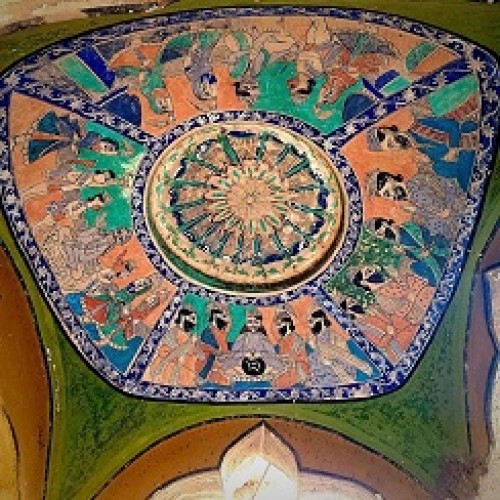
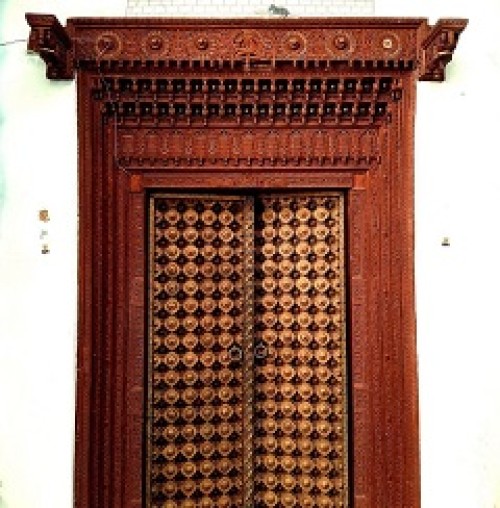
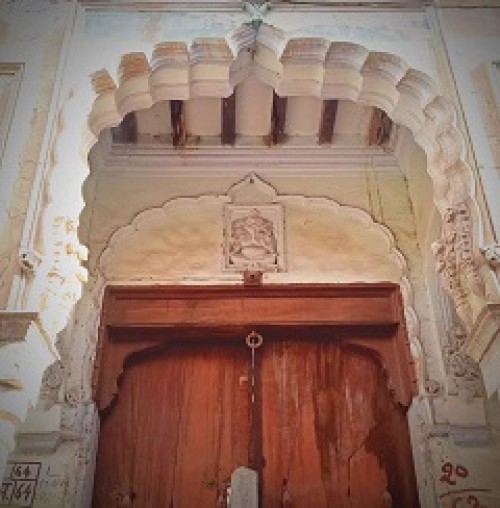
Ornate carved timber doors and shutters are another sign of the highly skilled craftsmen that dedicated hours of their lives to embellish these lavish homes. From oversized entrance doors to the smallest of windows, ones eyes are drawn to the intricate carving only to be left wondering what other artistic wonders lie beyond inside.
Such obvious displays of opulence on the exterior of the havelis left it plainly obvious to all that Sardarshahr was home to great wealth. Stories abound of the constant threat of bandits looking to take their share. It is said that secret rooms and basements were made to hide the riches of the prosperous Baniyas. Some even claim that rooms filled with gold and jewels still lie untouched.
Interiors more Extravagant than the Fascades
If you meet with one of the families still residing in Sardarshahr you may be lucky enough to be invited inside where you’ll see the adornments don’t end with the carved entryways. With a private mehfil – a special room where guests are entertained or hava mahal on the rooftop with coloured glass, and windows on all sides to capture the refreshing breeze, spacious courtyards, high ceilings, ornate archways and imported Italian tiles and wallpapers, each haveli will charm you with the colour and intricacies of a bygone era.
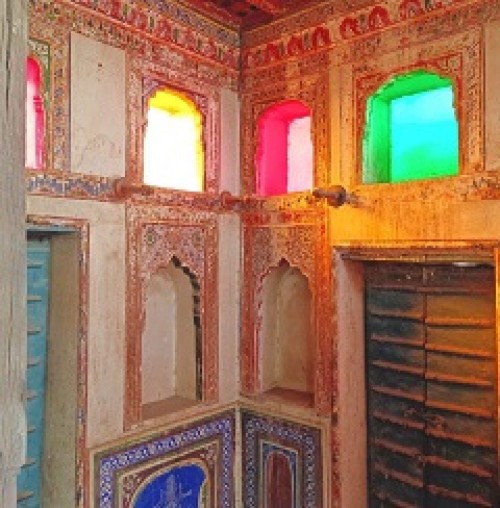
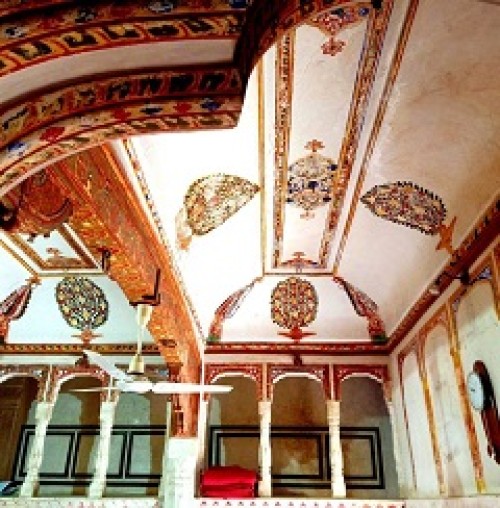
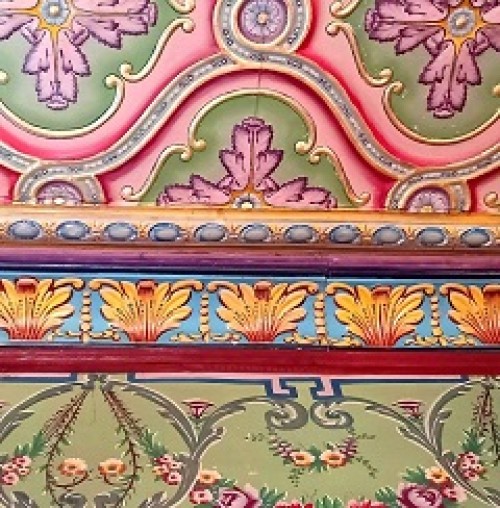
Destruction and Devastation of the Haveli’s of Sardarshahr
After a few hours spent mesmerised by the craftsmanship displayed around every corner you’ll be saddened to see the trolleys rolling by filled with the debris of demolished havelis. In our modern times where the square footage of a building is the most sought after element, those naturally cooling 600mm thick walls are being torn down only to be replaced by 150mm thick reinforced cement concrete (RCC). Inevitably these new homes will also be fitted with fans and multiple air conditioning units to combat the scorching temperatures of the desert, no longer buffeted by the monolithic stone and lime walls.
You don’t need to be Greta Thunberg to recognise that this is a step backwards from the perspective of sustainable design.
Along with the loss of passive solar cooling goes the loss of a multitude of dying art forms. Mineral pigments are too expensive for most to indulge in, likewise for Araish plasters and lime construction techniques. Wood carving is now mostly done by machine and sculptures come ready made cast in cement. Master artisans are struggling to find patronage for their craft and It seems within a generation these skills may be lost. Along with them goes a precious piece of human cultural heritage.
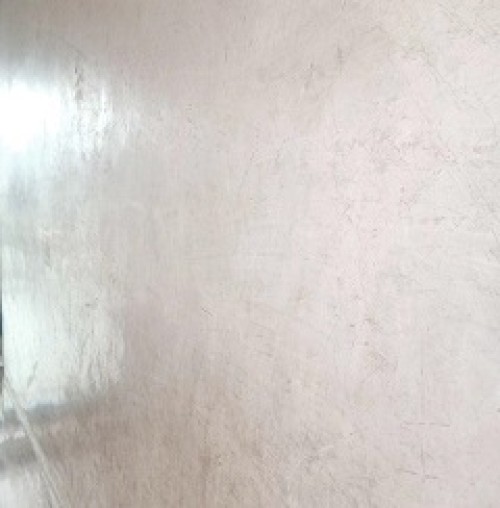
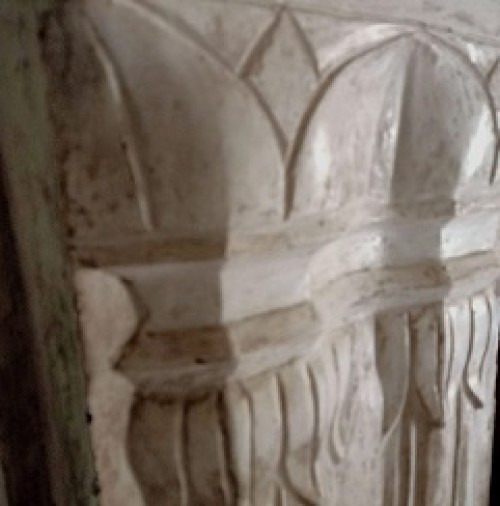
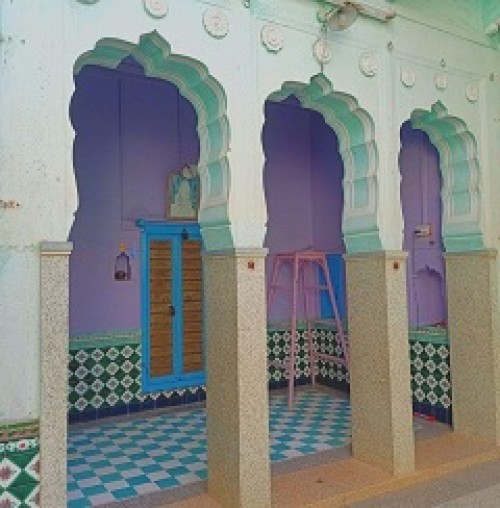
Would you like to learn about Thappi, Lohi, Araish or Frescoes? Join us for one of our workshops and learn directly from Master Artisans
Perhaps you would like to stay in a restored Haveli? We recommend you make Jaipur Haveli your home anytime you are passing through Jaipur. A lovingly restored family run Haveli with delightful frescoes located in the heart of the Pink City. A separate blog post on this property coming soon…
*Surki – Fired brick powder